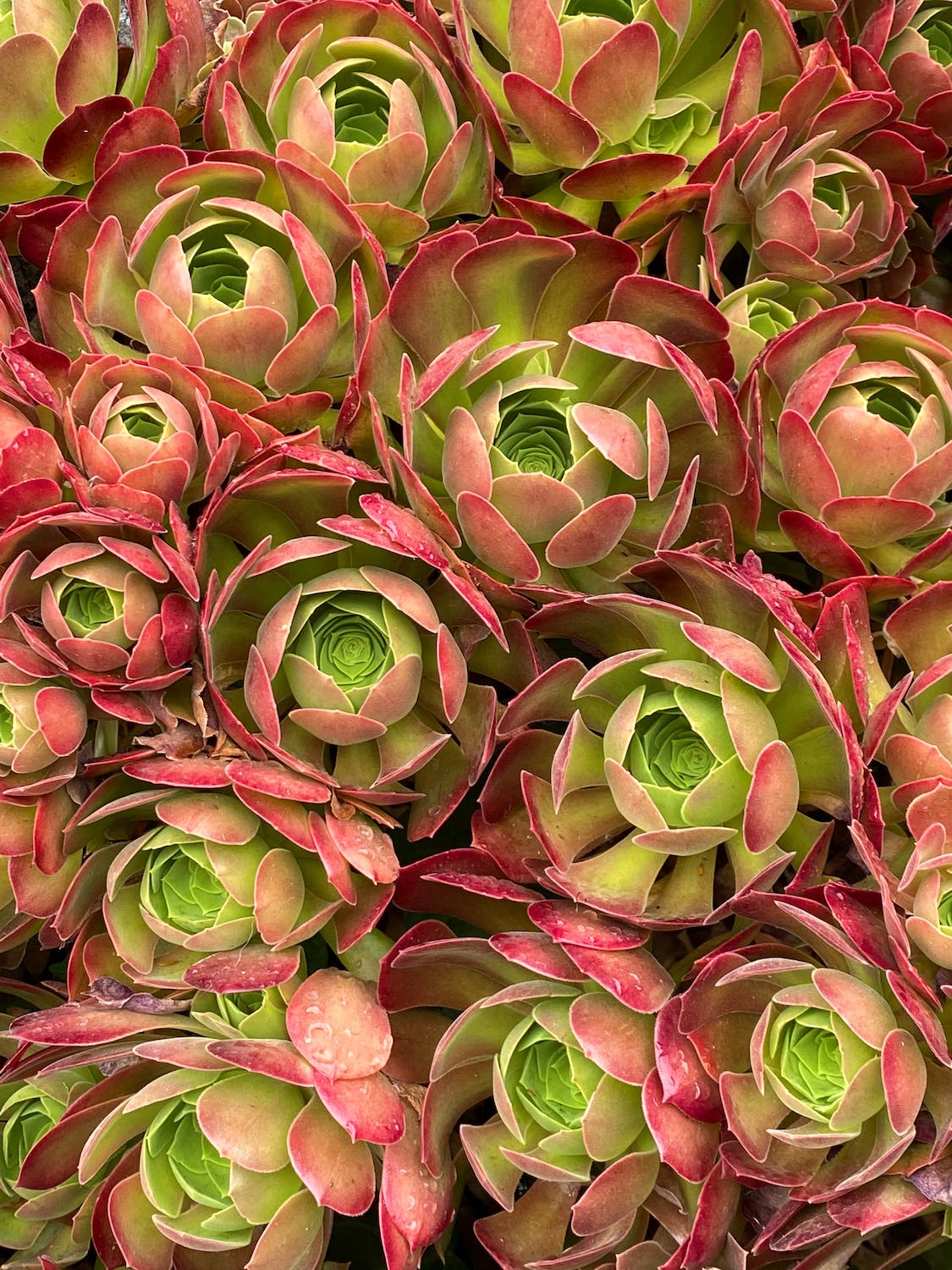Table of Contents
Aeoniums, also known as ‘tree houseleeks’, are a genus of succulent plants that belong to the family Crassulaceae. They are native to the Canary Islands, Madeira, and Morocco but are also popular among gardeners and indoor plant enthusiasts worldwide due to their unique and attractive appearance.
The Aeonium ‘Tree Houseleeks’ are particularly popular due to their tree-like appearance and thick, woody stem supporting a rosette of succulent leaves. The leaves of an Aeonium can come in various colours, including green, purple, red, and yellow, and can also have patterns or stripes. Some species of Aeoniums can also produce flowers, which typically bloom in the summer and come in shades of pink, white, or yellow.
Growing Aeoniums in the UK is relatively easy, as they are well-suited to the region’s temperate climate. However, some essential care requirements must be met to ensure the health and vitality of your Aeoniums.
Discover the Secrets of Thriving Aeoniums: Essential Tips for Care and Growth
1. Light Requirements
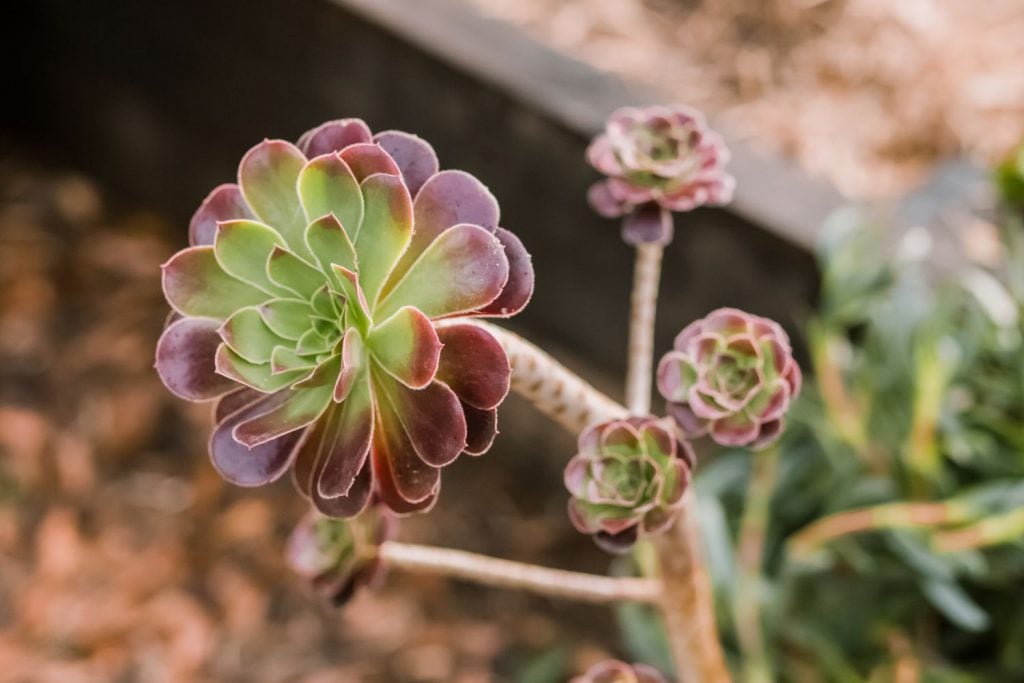
Light is an essential factor for the growth and well-being of any plant, including Aeoniums. Adequate light is necessary for photosynthesis, the process by which plants convert sunlight into energy. However, too much or too little light can have adverse effects on the health of Aeoniums.
In the UK, they can be grown both indoors and outdoors. If you are growing Aeoniums indoors, place them on a windowsill that receives a few hours of sunlight daily. East or west-facing windows are ideal, as they provide a good balance of light and shade throughout the day. Aeoniums can also be grown under artificial light, such as grow lights, if they do not receive adequate natural light.
If you are growing Aeoniums outdoors, choose a location sheltered from strong winds and receiving partial shade. This is because they are sensitive to direct sunlight, which can cause their leaves to become scorched and damaged. The sun can be intense in the UK during summers, so providing Aeoniums with shade during the hottest part of the day is essential. You can use a shade cloth or place Aeoniums under a tree or other sheltered area to protect them from the sun.
Some Aeonium species can also change colour depending on the season or the light they receive. For example, Aeonium arboretum ‘Zwartkop’ has dark purple leaves that turn green when exposed to too much light, while Aeonium ‘Sunburst’ has yellow and green leaves turn pink in full sun.
2. Soil Requirements
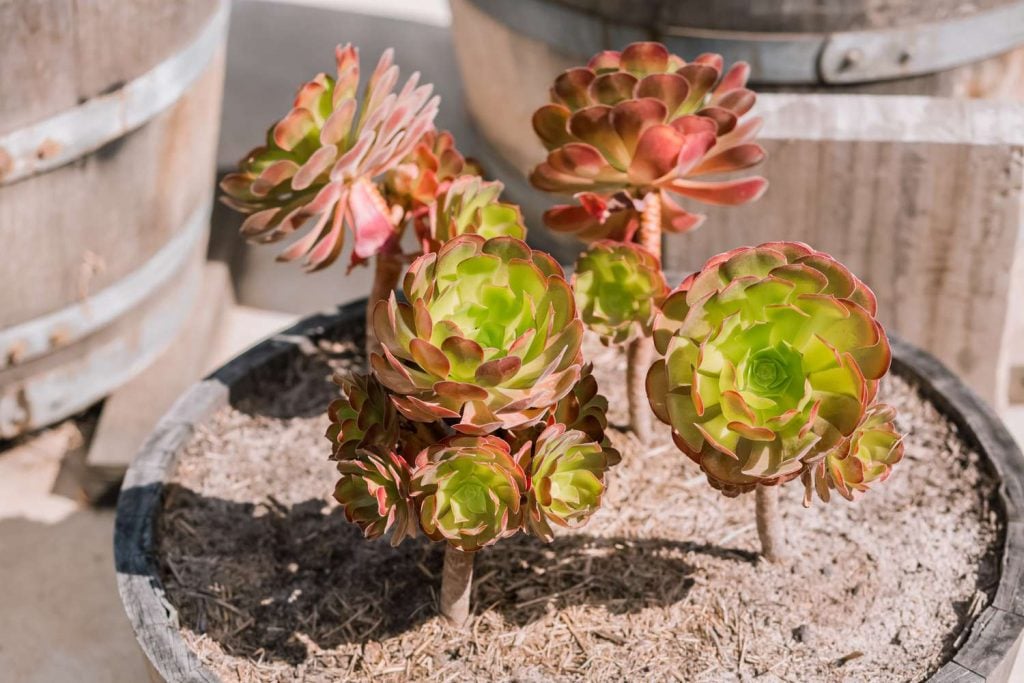
A well-draining soil mix is essential for Aeoniums, as they are susceptible to root rot if planted in soil that retains too much moisture. Additionally, Aeoniums prefer a soil mix that is rich in nutrients and has a slightly acidic pH level.
You can combine equal parts of cactus soil mix, perlite, and coarse sand to create an appropriate soil mix for your Aeoniums. The Cactus soil mix is specially formulated to provide excellent drainage and aeration, essential for succulent plants like Aeoniums. Perlite is a lightweight volcanic rock that helps to improve soil drainage and prevents soil compaction. Coarse sand also provides excellent drainage and aeration, adding weight to the soil mix to keep your Aeoniums stable in their pots.
When planting Aeoniums, choose a pot with suitable drainage holes. This will allow excess water to drain out of the soil, preventing it from becoming waterlogged and causing root rot. Fill the bottom of the pot with a layer of gravel or rocks to improve drainage, and then add your soil mix.
It is important to note that Aeoniums are sensitive to overwatering and should only be watered when the top inch of soil is dry to the touch. When watering, thoroughly saturate the ground and allow any excess water to drain from the pot. Aeoniums can also benefit from occasional fertilization during the growing season. Use a balanced, water-soluble fertilizer and dilute it to half-strength before applying it to your plants. With proper soil care, your Aeoniums will thrive and make a beautiful addition to your garden or indoor plant collection.
3. Watering Requirements
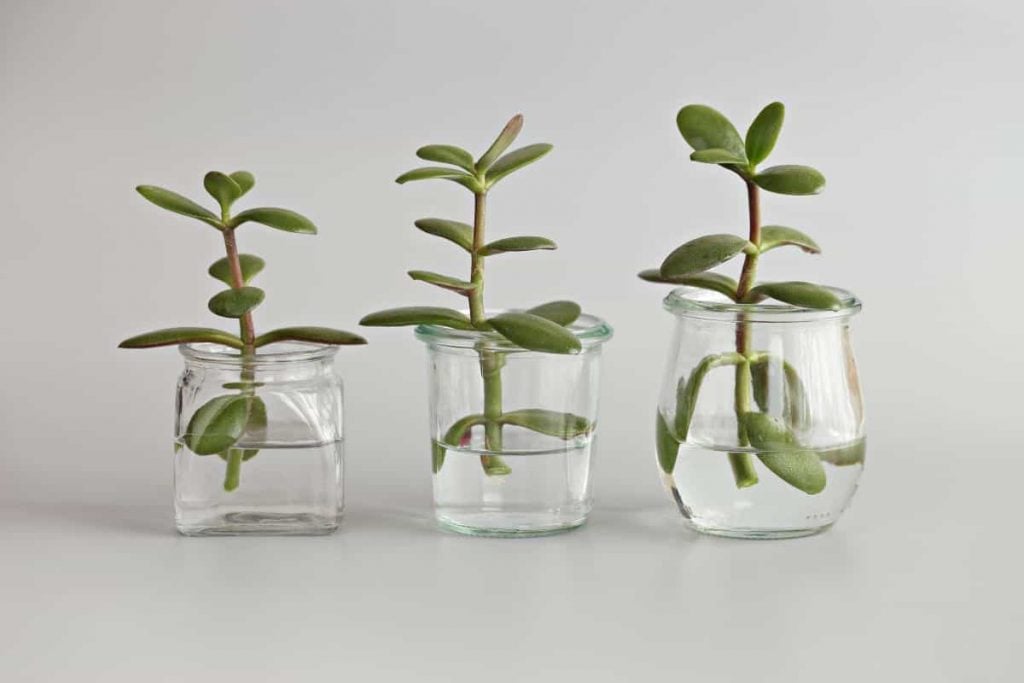
Watering is essential to caring for Aeoniums, and it is vital to get it right to ensure that your plants thrive. In addition, aeoniums are sensitive to overwatering, which can cause root rot and other issues, so allowing the soil to dry out entirely between watering is essential.
In the UK, the watering requirements for Aeoniums can vary depending on the time of year and the conditions in your home or garden. During summers, when the temperature is high, and there’s more sunlight, Aeoniums will likely need to be watered more frequently. However, during winters, when the temperature is low, and there is less sunlight, Aeoniums may only need to be dampened once every two weeks.
When watering Aeoniums, it is essential to water them deeply, allowing the water to soak into the soil. This will encourage the roots to grow deeply and establish a robust root system.
You can use a moisture meter to test the soil to ensure that Aeoniums get the right amount of water. This simple tool measures the soil’s moisture level, indicating when to water your plants. Insert a moisture meter into the ground at different depths to get an accurate reading.
It is important to note that Aeoniums can also benefit from occasional misting, especially during dry weather or when grown indoors in a dry environment. Misting can help increase the humidity around your plants, preventing them from dehydrating.
4. Temperature Requirements

Aeoniums are relatively easy to care for and can tolerate a wide range of temperatures, but they have specific temperature requirements that are important to consider. Generally, Aeoniums prefer moderate temperatures and are not frost-tolerant, so protecting them from extreme temperatures is essential.
In the UK, Aeoniums can be grown outdoors during the summer, when temperatures are warmer, and there is plenty of sunlight. However, temperatures can drop significantly during the winter months, and it is not uncommon for the UK to experience frost and freezing temperatures.
Knowing your area’s temperature and weather conditions is essential if you are growing Aeoniums outdoors. During the summer, Aeoniums will thrive between 20°C and 25°C, but protecting them from direct sunlight during the hottest part of the day is essential. If temperatures are expected to drop below freezing, or if there is a risk of frost, be sure to bring your Aeoniums indoors to protect them from the cold.
Indoors, Aeoniums prefer temperatures between 10°C and 18°C, a comfortable temperature range for most homes. However, it is essential to avoid placing Aeoniums near cold drafts, such as near windows or doors, as this can cause them to become stressed and may even lead to death.
5. Fertilizing Requirements
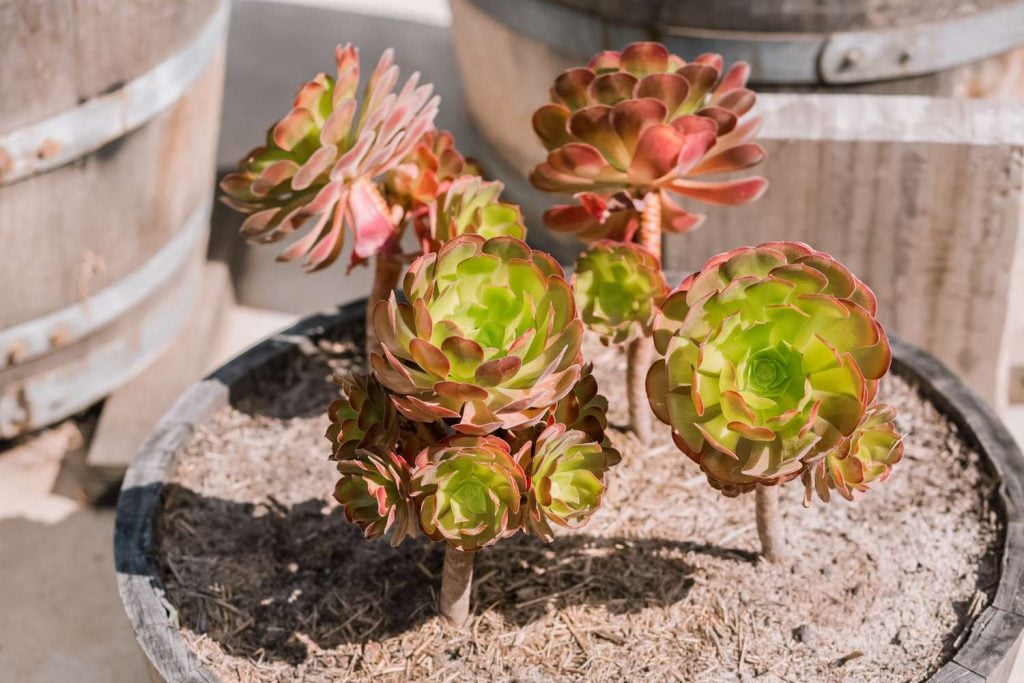
Aeoniums require regular fertilization to thrive and produce healthy, vibrant foliage during their growing season. Therefore, a balanced, water-soluble fertilizer is recommended for feeding Aeoniums, and it should be applied every four to six weeks during spring and summer.
When selecting a fertilizer for Aeonium, choosing one that is balanced and contains equal parts of nitrogen, phosphorus, and potassium is essential. These nutrients are necessary for plant growth and development, and they will help Aeonium to produce healthy foliage and blooms.
Mix the recommended fertilizer with water according to the manufacturer’s instructions to fertilize Aeonium. Then, apply the fertilizer directly to the soil around the base of the Aeonium, taking care not to get any on the foliage. Over-fertilizing can cause damage to the roots and leaves of Aeonium, so it is essential to use the recommended amount and avoid applying fertilizer during the winter months when the plant is dormant.
If you notice that Aeonium is not growing as well as it should, or if the foliage appears pale or yellow, it may be a sign that the plant is not receiving enough nutrients. In this case, you can increase the frequency of fertilization or switch to a fertilizer higher in nitrogen to encourage growth.
In addition to regular fertilization, it is also essential to provide Aeonium with adequate water and light to support healthy growth. Be sure to allow the soil to dry out completely between waterings to prevent overwatering, and provide Aeonium with bright, indirect light to encourage strong growth and vibrant foliage.
6. Pruning Requirements
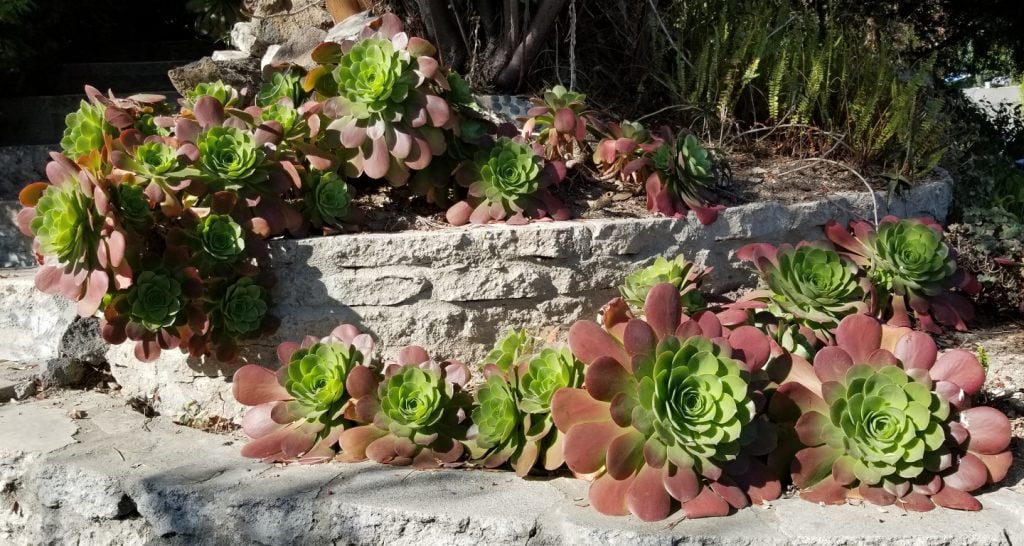
Pruning is essential to Aeonium care, as it helps keep the plant looking healthy and attractive. While Aeoniums do not require frequent pruning, occasional pruning can help to maintain their shape and encourage bushy growth.
The best time to prune Aeonium is in the spring before the growing season begins. Use sharp, clean scissors to remove dead or damaged leaves or trim back any leggy growth. This will help keep Aeonium looking neat and promote healthy growth.
Avoid cutting into the stem or removing too many leaves at once when pruning Aeonium. This can cause damage to the plant and may slow down its growth. Instead, focus on removing only the dead or damaged leaves or any change that is becoming too leggy.
If Aeonium is becoming too tall or spindly, you can also prune it back to encourage bushier growth. To do this, cut the stem back to a point where several sets of leaves exist. This will enable the plant to grow more leaves, creating a fuller, bushier appearance.
It is essential to use sharp, clean scissors when pruning Aeonium to prevent the spread of disease or infection. Be sure to clean the scissors before and after each use with rubbing alcohol or a bleach solution.
Unleashing the Beauty of Aeoniums
Growing Aeoniums, or ‘tree houseleeks’, in the UK can be a rewarding experience for plant enthusiasts. These succulent plants are adaptable and easy to care for, with various shapes and colours that can add interest to any garden or indoor plant collection.
To grow Aeoniums successfully, providing them with the right amount of light, water, soil, and fertilizer is essential. They thrive in bright, indirect light and prefer a well-draining soil mix that is slightly acidic with a pH level between 6.0 and 7.0. A weekly watering schedule during the summer months and less frequent watering during the winter, combined with deep watering when necessary, will help to prevent overwatering. A balanced, water-soluble fertilizer should be applied every four to six weeks during the growing season to provide the essential nutrients.
Aeoniums prefer moderate temperatures and are not frost-tolerant. Therefore, when grown outdoors in the UK, they should be brought indoors before the season’s first frost. Pruning should be done in the spring before the growing season begins by using sharp and clean scissors to remove dead or damaged leaves and encourage bushy growth.
In addition to caring for Aeoniums, propagating them is also possible. Aeoniums can be propagated from stem cuttings, leaf cuttings, or by gently separating offsets from the main plant. We are following the appropriate propagation method and providing the newly born plants with the same care as the parent plant.
You can enjoy these unique and beautiful plants for years with the proper care and attention.

